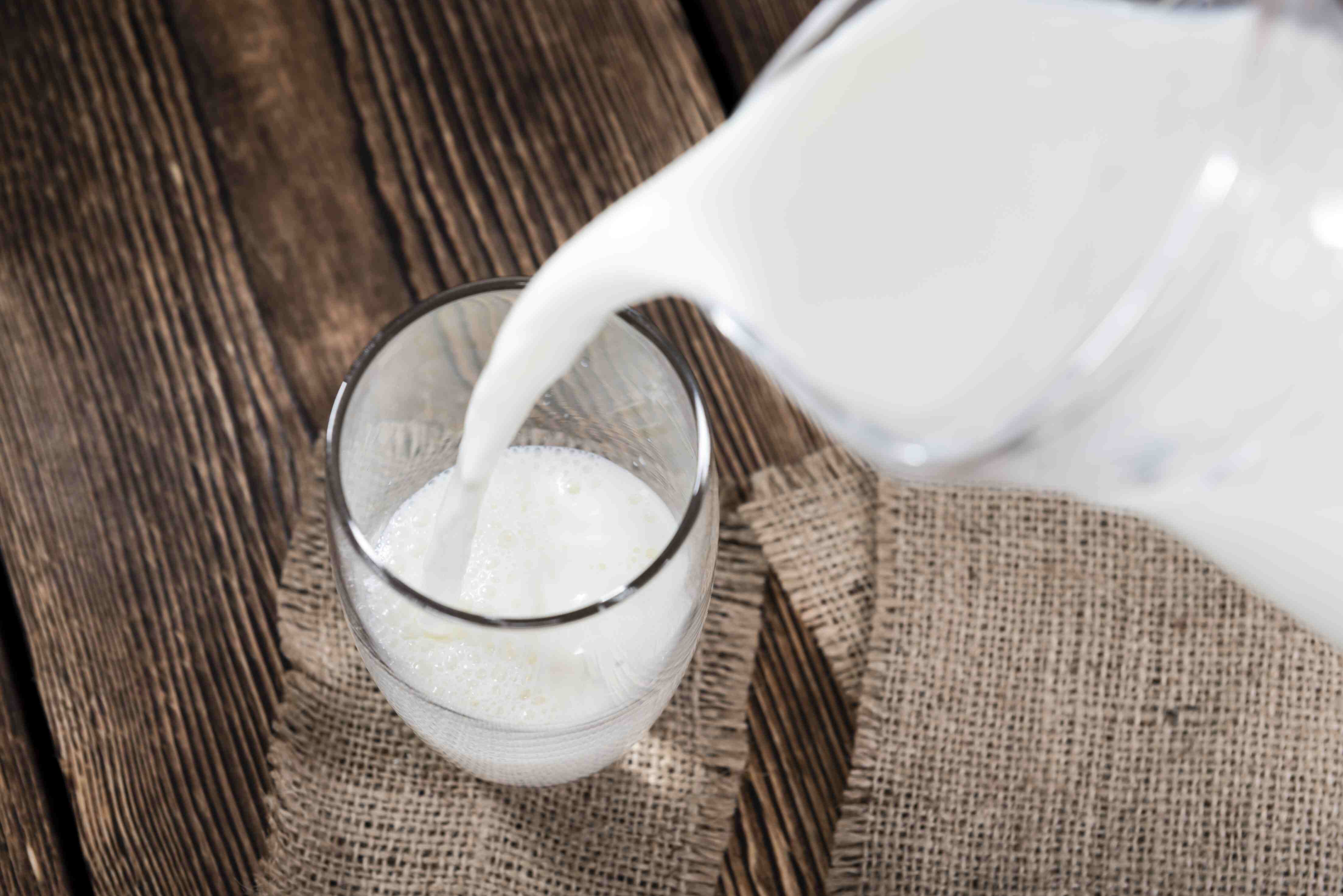Home>Furniture & Design>Interior Design Trends>How Many Carbs Are In A Glass Of Sauvignon Blanc


Interior Design Trends
How Many Carbs Are In A Glass Of Sauvignon Blanc
Published: February 5, 2024
Discover the interior design trends for 2021 and beyond. Learn how to incorporate the latest styles into your home for a modern and stylish look.
(Many of the links in this article redirect to a specific reviewed product. Your purchase of these products through affiliate links helps to generate commission for Storables.com, at no extra cost. Learn more)
Introduction
When it comes to enjoying a glass of wine, many individuals are conscious of their carbohydrate intake, especially those following low-carb or keto diets. Understanding the carbohydrate content of different wine varietals is essential for making informed choices while savoring a delightful glass of vino. In this article, we will delve into the world of carbohydrates in wine, specifically focusing on the beloved Sauvignon Blanc.
As we embark on this exploration, it's important to recognize that the carbohydrate content of wine can vary significantly based on several factors, including the type of grape, the winemaking process, and even the region where the grapes are grown. By shedding light on the carbohydrate content of Sauvignon Blanc, we aim to provide valuable insights for those seeking to balance their love for wine with their dietary preferences.
Join us as we uncover the nuances of carbohydrates in Sauvignon Blanc, gaining a deeper understanding of this popular wine varietal and its impact on our dietary choices. Let's raise our glasses and embark on this enlightening journey into the world of wine and carbohydrates.
Key Takeaways:
- Enjoying a glass of Sauvignon Blanc? It typically contains 3-4 grams of carbs per serving, making it a carb-friendly choice for wine enthusiasts mindful of their dietary intake.
- Factors like grape ripeness and winemaking techniques influence the carb content of Sauvignon Blanc, offering a fascinating interplay of flavors and dietary considerations.
Understanding Carbohydrates
Carbohydrates are a vital macronutrient found in various foods and beverages, playing a crucial role in providing energy to the body. In the context of wine, understanding the presence of carbohydrates is essential for individuals who are mindful of their dietary intake. Carbohydrates in wine primarily come from the natural sugars present in the grapes used to produce the wine. These sugars are converted into alcohol during the fermentation process, but a portion may remain unfermented, contributing to the overall carbohydrate content of the wine.
It's important to note that carbohydrates in wine are not solely derived from sugars. Residual sugars, which are the natural sugars left over after fermentation, contribute to the carbohydrate content as well. This is particularly relevant when considering the carbohydrate levels in off-dry or sweet wines, where a higher residual sugar content translates to increased carbohydrate content.
When assessing the carbohydrate content of wine, it's crucial to differentiate between total carbohydrates and net carbohydrates. Total carbohydrates encompass all forms of carbohydrates present in the wine, including sugars, fiber, and other components. On the other hand, net carbohydrates specifically refer to the carbohydrates that impact blood sugar levels, excluding fiber and certain types of sugar alcohols.
For individuals following specific dietary regimens, such as low-carb or keto diets, understanding the net carbohydrate content of wine is particularly significant. While wine is not typically high in carbohydrates compared to other beverages and foods, being mindful of its carbohydrate content can aid in making informed choices that align with dietary goals.
As we delve into the carbohydrate content of Sauvignon Blanc, it's essential to grasp the broader context of carbohydrates in wine, encompassing their sources, impact on dietary considerations, and the varying factors that contribute to the overall carbohydrate profile of different wine varietals. This foundational understanding sets the stage for a comprehensive exploration of the specific carbohydrate content in Sauvignon Blanc, shedding light on its nuances and implications for those with a penchant for this beloved wine.
Carbohydrate Content in Sauvignon Blanc
Sauvignon Blanc, renowned for its crisp acidity and vibrant flavors, is a popular choice among wine enthusiasts. When it comes to its carbohydrate content, Sauvignon Blanc typically contains low to moderate levels of carbohydrates, making it a favorable option for individuals mindful of their dietary intake.
The carbohydrate content in a standard 5-ounce (148-milliliter) serving of Sauvignon Blanc ranges from approximately 3 to 4 grams. This modest carbohydrate level positions Sauvignon Blanc as a relatively carb-friendly choice compared to other alcoholic beverages and sugary cocktails. It's important to note that the specific carbohydrate content can vary slightly among different Sauvignon Blanc wines, influenced by factors such as residual sugar levels and winemaking techniques.
The dry and crisp profile of Sauvignon Blanc is attributed to its relatively low residual sugar content, which contributes to its restrained carbohydrate levels. In contrast to sweeter wine varietals, such as Riesling or Moscato, Sauvignon Blanc undergoes fermentation that effectively converts a significant portion of the grape sugars into alcohol, resulting in a drier wine with reduced residual sugar and, consequently, lower carbohydrate content.
Furthermore, the climate and terroir in which Sauvignon Blanc grapes are cultivated can impact the grape's sugar levels, subsequently influencing the carbohydrate content of the resulting wine. Grapes grown in cooler climates tend to have higher acidity and lower sugar levels, contributing to the characteristic zesty and refreshing profile of Sauvignon Blanc while also influencing its carbohydrate content.
For individuals adhering to low-carb or keto diets, understanding the carbohydrate content of Sauvignon Blanc is valuable for making informed choices. Its moderate carbohydrate levels make it a suitable option for those seeking to indulge in a glass of wine while managing their carbohydrate intake. By opting for Sauvignon Blanc, individuals can savor the delightful nuances of this varietal without significantly impacting their dietary goals.
In summary, Sauvignon Blanc offers a balanced and approachable carbohydrate profile, making it a versatile choice for wine enthusiasts with varying dietary preferences. Its characteristic dryness, coupled with moderate carbohydrate levels, positions Sauvignon Blanc as an appealing option for those seeking a delightful wine experience without compromising their dietary considerations. Whether enjoyed on its own or paired with a range of culinary delights, Sauvignon Blanc's restrained carbohydrate content adds to its allure, inviting enthusiasts to raise their glasses and savor the distinctive charm of this beloved varietal.
A 5 oz glass of Sauvignon Blanc typically contains about 3-4 grams of carbs. If you’re watching your carb intake, it’s important to factor this in when enjoying a glass of wine.
Factors Affecting Carbohydrate Content
The carbohydrate content of wine, including Sauvignon Blanc, is influenced by several key factors that contribute to the overall composition of the wine. Understanding these factors provides valuable insights into the nuanced variations in carbohydrate levels among different wine varietals.
-
Grape Ripeness: The ripeness of the grapes at the time of harvest significantly impacts the carbohydrate content of the resulting wine. Riper grapes tend to have higher sugar levels, which, when fermented, can contribute to increased alcohol content and residual sugars in the wine. In the context of Sauvignon Blanc, the degree of grape ripeness plays a pivotal role in shaping its carbohydrate profile, with riper grapes potentially yielding wines with slightly elevated carbohydrate levels.
-
Winemaking Techniques: The specific techniques employed during the winemaking process can influence the carbohydrate content of the wine. For instance, the duration of fermentation and the decision to halt fermentation at a certain point can impact the residual sugar levels in the wine. In the case of Sauvignon Blanc, winemakers may opt for a drier style by allowing fermentation to proceed until a significant portion of the grape sugars is converted into alcohol, resulting in a wine with lower residual sugar and, consequently, reduced carbohydrate content.
-
Climate and Terroir: The environmental conditions in which the grapevines are cultivated, including the climate, soil composition, and vineyard elevation, play a crucial role in shaping the grape's sugar levels. Grapes grown in cooler climates often exhibit higher acidity and lower sugar content, contributing to the characteristic crispness and lower carbohydrate levels in wines such as Sauvignon Blanc. Conversely, grapes from warmer regions may yield wines with slightly higher residual sugar and carbohydrate content.
-
Wine Style and Region: Different wine styles and regional variations can impact the carbohydrate content of the wine. For example, Sauvignon Blanc wines from specific regions may showcase varying carbohydrate profiles influenced by regional winemaking traditions, grape cultivation practices, and prevailing climatic conditions. Additionally, the decision to produce a dry, off-dry, or sweet style of Sauvignon Blanc can directly influence its carbohydrate content, offering diverse options for wine enthusiasts with distinct preferences.
By considering these factors, wine enthusiasts and individuals mindful of their carbohydrate intake can gain a deeper appreciation for the complexities that shape the carbohydrate content of Sauvignon Blanc and other wine varietals. This understanding empowers individuals to make informed choices, aligning their wine preferences with their dietary considerations while savoring the diverse and captivating world of wine.
Conclusion
In conclusion, exploring the carbohydrate content of Sauvignon Blanc unveils a fascinating interplay of factors that contribute to the overall composition of this beloved wine varietal. With its characteristic dryness and vibrant flavors, Sauvignon Blanc offers a balanced carbohydrate profile, making it an appealing choice for wine enthusiasts with diverse dietary preferences. The modest carbohydrate levels in Sauvignon Blanc, typically ranging from 3 to 4 grams per standard serving, position it as a favorable option for individuals seeking a delightful wine experience while mindful of their carbohydrate intake.
The nuanced variations in carbohydrate content among different wine varietals, including Sauvignon Blanc, underscore the intricate influence of grape ripeness, winemaking techniques, climate, terroir, and regional traditions on the final composition of the wine. Understanding these factors provides valuable insights for individuals navigating dietary considerations while indulging in the pleasures of wine.
For those adhering to low-carb or keto diets, the moderate carbohydrate content of Sauvignon Blanc presents an opportunity to savor this renowned varietal without significantly impacting their dietary goals. Whether enjoyed on its own or paired with a variety of culinary delights, Sauvignon Blanc's restrained carbohydrate levels offer a versatile and approachable option for wine enthusiasts seeking a harmonious balance between their love for wine and their dietary choices.
As we raise our glasses to the captivating world of wine, it becomes evident that the carbohydrate content of Sauvignon Blanc, and wine in general, is a multifaceted aspect that intertwines the artistry of winemaking with the nuances of grape cultivation and regional influences. This complexity adds depth to the wine-drinking experience, inviting enthusiasts to appreciate the intricate interplay of flavors, aromas, and yes, even carbohydrates, as they embark on a sensory journey through the world of wine.
In essence, the exploration of carbohydrates in Sauvignon Blanc serves as a reminder that the pleasures of wine extend beyond mere indulgence, encompassing a rich tapestry of elements that converge to create an experience that is as enriching as it is delightful. With its restrained carbohydrate content and invigorating character, Sauvignon Blanc stands as a testament to the artistry and diversity of the wine world, inviting enthusiasts to revel in its charm while embracing their individual dietary preferences.
Frequently Asked Questions about How Many Carbs Are In A Glass Of Sauvignon Blanc
Was this page helpful?
At Storables.com, we guarantee accurate and reliable information. Our content, validated by Expert Board Contributors, is crafted following stringent Editorial Policies. We're committed to providing you with well-researched, expert-backed insights for all your informational needs.
















0 thoughts on “How Many Carbs Are In A Glass Of Sauvignon Blanc”